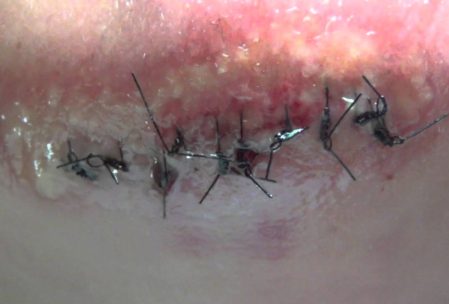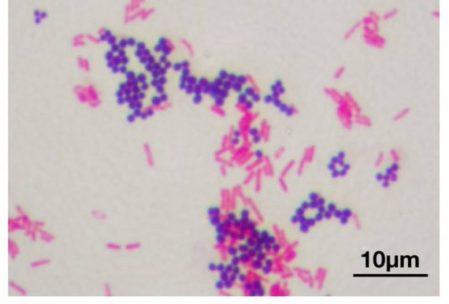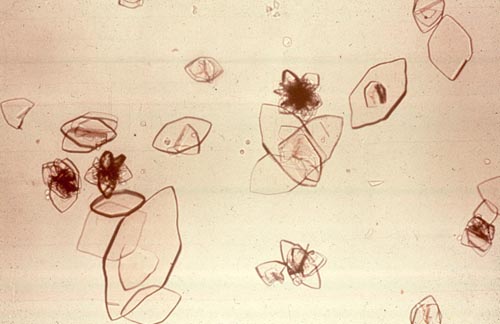SHTF Laboratory Ok What is that smell?
Last time we talked about the tools used for a SHTF lab and some of the items needed. And one set of tests that a survival medic could handle. This week we’ll tackle a different avenue of lab diagnostics to build upon what we learned last time. The basic microscope and looking at a smear of stained blood on a slide will give you a few things. Are they anemic or are they infected. If they don’t have a lot of red blood cells they are anemic or have a leak. If they have a large amount of white blood cells they are probably infected. So with that bit of information we charge bravely into the world of microbiology. We are not going to get into a long discussion of sepsis. That is a HUGE subject that is worthy of a class all it’s own. But with our trusty microscope you can determine what type of infection and there are tables of what antibiotic works on what infections. A blood smear will not always show an increased white count, until the infection has a firm hold. For this news letter we are going to stick with some simple and common infections that as an old medic we could treat without having to pull a solider from the field and send him to the TMC.
Let’s start with what may be the most common SHTF infection. An infected wound. And probably one that was improperly cleaned and closed.
 1
1
Something like the above image.
So here we have 3 choices.
- Do nothing and hope for the best.
- Randomly select an antibiotic and hope for the best.
- Do a Gram Stain look at the bacteria and select the best for the job.
But wait Gram Stain? Yup Gram stain.
Grams Stain is a two color process that will dye the 2 types of bacteria. Gram Positive and Gram Negative.
Gram Positive will be purple after the staining process and Gram negative will be pink. For the most part. G+ bacteria are not pathogenic (Harmful) to humans. But don’t let that fool ya!
And G- are normally dangerous to humans
The colors do not tell which antibiotic to use. They tell what the bacteria are.

Above is a gram stain. What is important about this is 1. the colors 2. the shapes and 3. the organization. By organization I mean are the bacteria in Clusters, Chains or Tetrads The way the “hang out” and the color is how to tell them apart with out a huge expensive microscope and YEARS of training in morphology.
Here are some images of different types of bacteria and how they join
First are some Gram Positive Cocci

Next Gram Positive Rods. Now Rods can appear in clusters and Groups, They are categorized by shape and connection

Remember what I said about Gram Positive , Normally NOT being fatal to man? These guys are.
Gram negative. G- are Cocci and Rods like G+ But they also have

Still with me here? I know that this is bordering on information overload. Wait until the class then!! This is to show you what you can do with minimal inexpensive equipment. With a microscope some glass slides and 20 bucks in stains that if stored properly will last for years. You take a guessing game and potentially lose a patient to a educated choice and save a person AND at the same time conserve precious resources. By that I mean not throwing costly and hard to find antibiotics at an infection and hoping for the best.
The next common infection SHTF is the UTI Urinary Tract Infection.
The UTI is a very common infection and today we think nothing of. Go to the doc, they dipstick your urine send the rest off for culture and give you some Sulfa. AND 3 days later it still burns, your urine is still cloudy and you have a fever.? Why? Because your doc just did a guess since most UTI’s respond well to sulfa drugs. And he got buried in work and never read the lab report and to find out that what he thought was an E-Coli infection (The majority are) it turned out to be A Klebsiella pneumoniae. And cephalosporins work better. But by this time you’re feverish, dehydrated disoriented and well maybe dying. IN SHTF you may not have the luxury of agar plates and antibiotic sensitivity testing. But urine in a conical tube, swung on the end of a 1 yard string will pull enough of the solids to the bottom and a quick gram stain will show that instead of the skinny rods of E-coli you have the fat rods of K-pneumoniae. And your little book of antibiotics will show you to use a cephalosporin.
But what if your patient as swelling and PAIN in certain joints and not all like arthritis? The joints are red and PAINFUL and they have never had it before. Think peeing in a cup and looking at under a microscope may help?
It may. If you see these little guys in it

These are Uric Acid crystals.Normally the kidneys gather the uric acid and dump it out of the body. But if the levels get high enough to cause pain you will sometimes see them in the urine.
3
As you can see Ditch Micro is a HUGE subject. And one that I have been seriously thinking of doing a class on. So tune in this week to Cat Ellis The Herbal Prepper on her show on Prepper Broadcasting network as her and I talk a bit about this very topic.
1 Image courtesy of The Medical Labs Portal
2 Images courtesy of UPenn Antibiotic Manual
3. Image courtesy of Mad Techs

2 responses to “Ok What is that smell?”